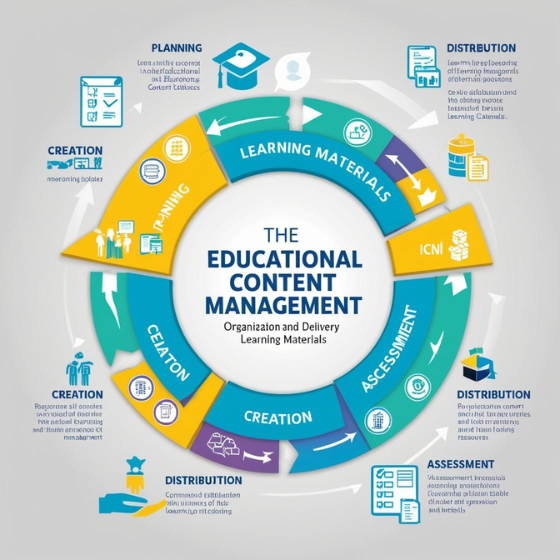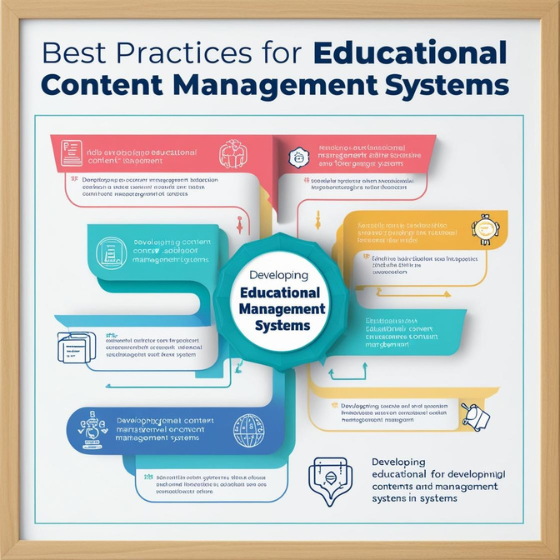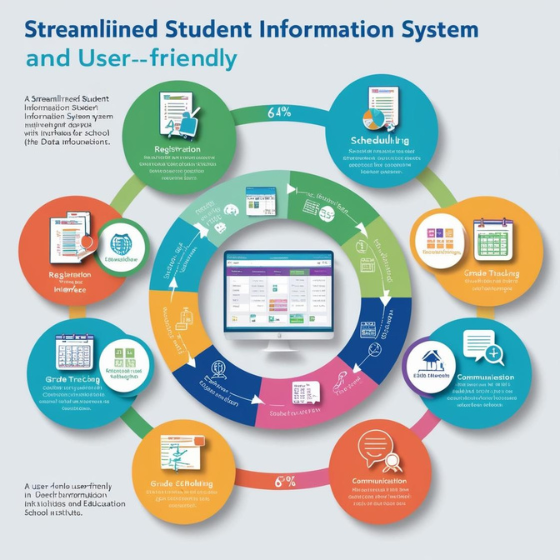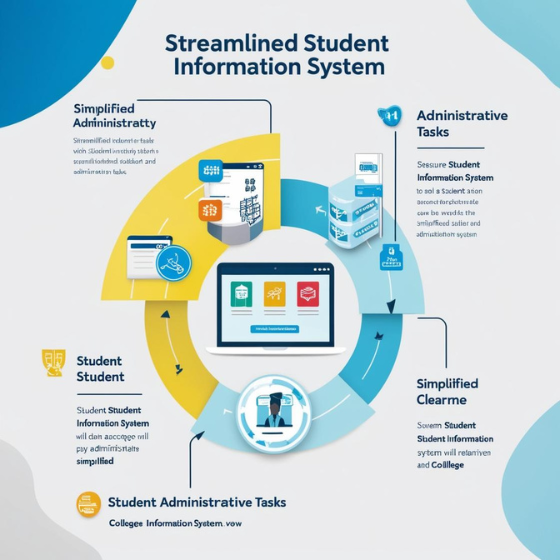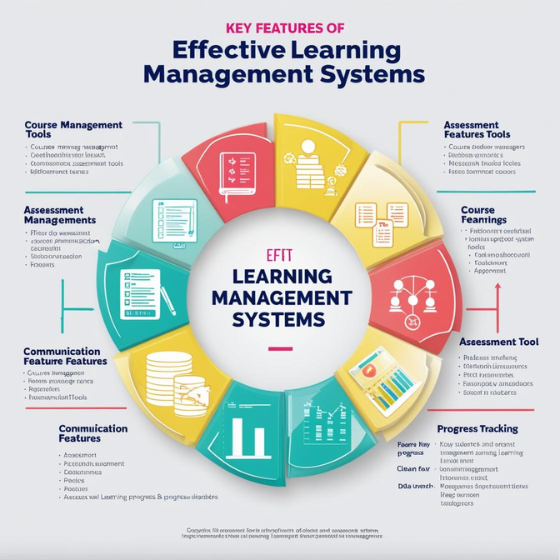Educational Content Management: Organizing and Delivering Content
In today’s digital-first education environment, managing and delivering content effectively is pivotal for successful learning outcomes. Educational Content Management: Organizing and Delivering Content has become a cornerstone for educators and institutions aiming to provide structured and accessible materials to learners worldwide. But what does it take to excel in this area?
This blog delves into the principles, strategies, and technologies that empower educational content management systems (ECMS) to optimize content delivery, ensuring students and educators enjoy a seamless experience.
Why Is Educational Content Management Important?
The shift to digital learning has amplified the need for streamlined content management. Consider this statistic: According to EdTech Magazine, 74% of educators believe that technology has made learning more engaging. However, without proper organization and delivery mechanisms, even the best educational content can fail to reach its potential.
Key Benefits of Efficient Content Management
- Improved Accessibility: Learners can access materials anytime, anywhere.
- Enhanced Engagement: Organized content fosters interactive and immersive experiences.
- Time-Saving: Teachers can easily update and reuse resources, focusing more on teaching than logistics.
When done right, educational content management: organizing and delivering content can transform the way knowledge is shared and consumed.
Core Components of Educational Content Management
A successful ECMS relies on several critical components. Let’s explore them:
1. Centralized Content Repository
A centralized repository acts as the backbone of any ECMS, storing educational materials like lecture notes, videos, quizzes, and assignments in one place.
- Key Features:
- Cloud-based storage for scalability.
- Categorization options for easy retrieval.
2. User-Friendly Interface
Ease of use is a non-negotiable requirement. An intuitive interface ensures educators and learners can navigate the platform effortlessly.
- Tip: Implement search functionalities and drag-and-drop content uploads to streamline usage.
3. Multi-Format Content Support
Supporting diverse content formats—text, video, audio, and interactive media—is crucial for catering to different learning styles.
- Example: Platforms like Moodle and Blackboard excel at providing multimedia content integration.
4. Analytics and Reporting
Insightful analytics help educators understand content performance and learner engagement.
- Pro Tip: Use heatmaps to identify popular resources and underperforming content.
Discover how Sodio integrates analytics into educational platforms to improve outcomes.
5. Scalability and Flexibility
The system should grow alongside the institution’s needs, accommodating more users, courses, and data.
Challenges in Managing Educational Content
Despite its importance, educational content management comes with its share of challenges:
1. Content Overload
Too much content can overwhelm learners, diluting its effectiveness.
- Solution: Implement a content curation strategy to prioritize quality over quantity.
2. Security and Privacy Concerns
With sensitive student and educator data in play, robust security measures are essential.
- Approach: Use encryption, secure access controls, and regular audits.
3. Lack of Interoperability
Many platforms fail to integrate seamlessly with other tools, creating a fragmented experience.
- Fix: Opt for ECMS solutions that support API integrations and standard protocols.
At Sodio, we specialize in building interoperable systems for holistic education experiences. Explore Solutions.
Best Practices for Organizing and Delivering Educational Content
To maximize the potential of your ECMS, consider these best practices:
1. Prioritize Mobile Accessibility
In 2023, over 60% of learners accessed educational content via mobile devices. Your ECMS must be mobile-friendly.
2. Use Metadata and Tags
Organize content effectively by tagging resources with keywords, categories, and descriptions.
3. Incorporate Gamification
Engage learners with gamified elements such as badges, leaderboards, and challenges.
4. Foster Collaboration
Enable features like group projects, discussion forums, and peer reviews for interactive learning.
5. Provide Continuous Training
Educators must be well-versed in using ECMS tools to ensure effective content delivery.
Looking to revamp your content management strategy? Contact Sodio for expert guidance.
Case Study: How Sodio Transformed Educational Content Delivery
Challenge
A global education provider struggled with managing and delivering vast volumes of content across multiple regions.
Solution
Sodio developed a bespoke ECMS with:
- A centralized repository for multilingual content.
- Advanced analytics for tracking learner engagement.
- Seamless integration with third-party tools like Zoom and Google Classroom.
Results
- 50% reduction in content retrieval time.
- 30% increase in learner satisfaction scores.
- Scalable infrastructure capable of handling a 200% surge in users during peak periods.
Want to replicate this success? Schedule a consultation today.
Future Trends in Educational Content Management
The future of educational content management is bright, with innovations poised to revolutionize how we organize and deliver content:
1. Artificial Intelligence (AI)
AI can automate content tagging, personalize learning paths, and provide instant feedback to students.
2. Augmented Reality (AR) and Virtual Reality (VR)
Immersive technologies will make learning more engaging and hands-on, especially in STEM fields.
3. Blockchain for Credentialing
Blockchain can provide a secure way to issue and verify academic credentials, reducing fraud.
4. Microlearning Modules
Short, focused learning segments will cater to the modern learner’s preference for bite-sized content.
5. Voice Integration
Voice-activated commands and assistants will enhance accessibility and user interaction.
Stay ahead of these trends with Sodio’s cutting-edge solutions.
Conclusion
In the fast-paced world of education, Educational Content Management: Organizing and Delivering Content is not just a technical requirement but a strategic necessity. By leveraging the right tools, best practices, and innovative technologies, institutions can create systems that empower educators and engage learners.
At Sodio, we pride ourselves on delivering tailored ECMS solutions that meet the unique needs of educational institutions. Whether you’re looking to streamline content delivery, enhance learner engagement, or scale your platform, we have the expertise to make it happen.
Take Action Today
Ready to transform your educational content management? Contact Sodio or explore our educational technology services to get started. Together, let’s shape the future of learning.
